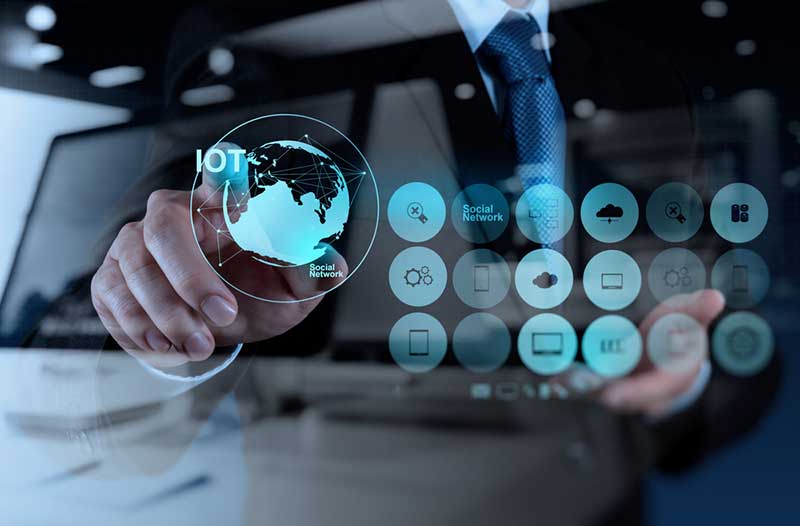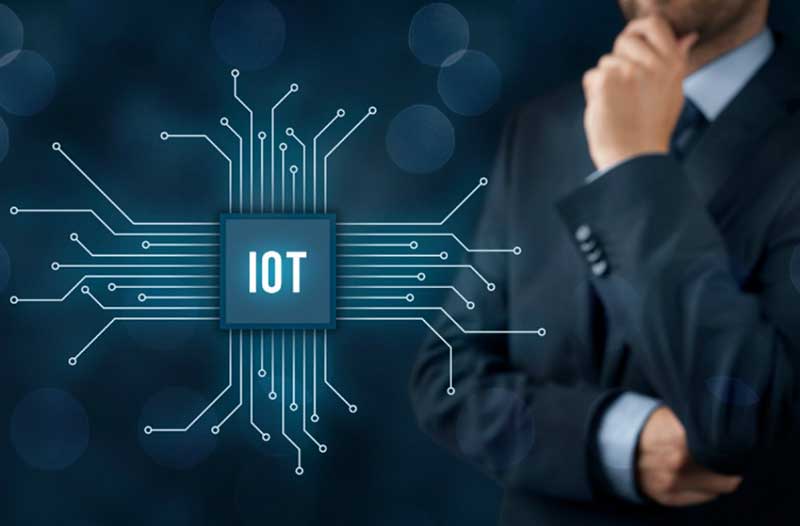- Businesses rely on the IoT to impress their customers
- Tech enables savings and new revenue streams
- Retailers use the IoT to gain a competitive edge
- How to overcome challenges when deploying IoT solutions
- All businesses can benefit from tech innovations
Public interest in the Internet of Things (IoT) is growing in leaps and bounds, with connected devices transforming the way we run our homes, companies, and even entire cities. In the US alone, for instance, consumers are expected to spend over $90 billion on IoT devices by 2023, while business investments in the IoT are estimated to reach $832 billion in 2020. The IoT-powered fourth industrial revolution is upon us, radically changing the business landscape – and life – as we speak.
In fact, a study conducted by Forbes Insights and Hitachi Vantara reveals that executives rank the Internet of Things as the single most important emerging technology, outranking artificial intelligence and robotics. This isn’t surprising, considering that this tech is expected to generate new revenue and annual savings of up to $11 trillion by 2025. What’s more, it’ll offer companies new ways to improve efficiency, understand their customers, and grow their business, making the deployment of IoT tech in the digital age crucial to business survival. For instance, 94 per cent of companies that invested in the IoT expect a significant profit boost. But rising profit isn’t the only benefit the IoT offers – its effects are much more profound than that.
Businesses rely on the IoT to impress their customers
IoT sensors, cameras, and special software enable businesses to collect massive amounts of data and discover new insights about their products and customers. Data in itself isn’t useful, however. To get to those coveted insights, machine learning first needs to comb through vast datasets, such as online and on-site buying histories of thousands of people, finding patterns and providing actionable data that can be used to improve decision-making. For instance, Samsung collects usage data from thousands of its smart TVs and uses it to improve products and provide a better user experience. Other companies, though, rely more on collecting and analysing visual material. Retailers, for instance, analyse video footage from in-store cameras with AI tools to better understand customer reactions to the latest store discounts. And at airports, sensors and cameras can help airport employees quickly pinpoint things like malfunctioning escalators, dirty bathrooms, or crowded corridors, and dispatch teams to address the problem.

Tech enables savings and new revenue streams
Besides improving customer experience, the IoT also helps companies to reduce expenses and even creates new revenue streams. A study by the logistics company DHL and the IT company Cisco shows that the IoT will cut global productivity costs by more than $1 trillion. For example, companies such as Harley-Davidson report a seven per cent cost reduction after using the IoT to optimise the production process. Smaller companies can benefit, too. For instance, by protecting their offices with a smart security system or cutting utility costs with energy-efficient smart air conditioners. Mining companies can equip their heavy trucks with sensors and use the collected data to make their vehicles more efficient, saving money on fuel and labour. The rising demand for IoT devices also benefits manufacturers, not only because of product sales, but also due to significant revenue from maintenance and monitoring services. Clearly, the IoT is affecting businesses in many different ways, with the transformation being especially profound in the field of commerce.
Retailers use the IoT to gain a competitive edge
Retailers and producers work tirelessly to catch up with everything technology has to offer. Improved logistics is one of those things, as the Internet of Things enables seamless delivery and sensor-based tracking of online orders from the production plant to the customer’s doorstep. Automated orders are another opportunity to impress consumers. For instance, several brands have already customised their dishwashers and printers in such a way that they can automatically order detergent and toner cartridges from Amazon. And as market competition increases, those businesses that use tech to frequently interact with consumers will be able to gather more data and create a more personalised shopping experience, thereby gaining a competitive edge.
They can, for example, offer a discount to customers in their stores for items they’ve been looking at online. Or just think of the benefits that super-apps like China’s WeChat could potentially bring on a global scale. These apps integrate services like payment, social media, internet browsing, ride-hailing, and others into a single platform. These and many other examples illustrate massive changes in commerce caused by the IoT and other technologies that businesses can’t afford to ignore.
How to overcome challenges when deploying IoT solutions
While the IoT offers many benefits, deploying this technology in business operations isn’t an easy job. The Hitachi Vantara and Forbes Insights study lists IT security concerns, lack of skilled staff, and inefficient cross-department cooperation as some of the most common challenges. But important lessons can be learned from companies that have already implemented IoT projects. For instance, the three best practices include having CIOs as project leaders, hiring external consultants in planning teams, and using “a third-party platform as the basis for IoT operations”.

Furthermore, the deployment of IoT solutions should start with a compelling and profitable business case. Led by a comprehensive strategy, companies should first make small steps before committing to big investments. And viewing the Internet of Things as both a threat and an opportunity can give the team a sense of urgency, motivating staff to complete projects on time. This approach has helped many companies deploy IoT tools and avoid being overrun by tech-savvy competition.
All businesses can benefit from tech innovations
Most executives consider the Internet of things the key emerging technology for increasing efficiency and profit. Its potential applications are diverse and range from homes and companies to cities and retail stores. As the IoT expert Hu Yoshida says, the “IoT is an opportunity that can benefit all industries, whether they are highly automated manufacturers or more manually oriented businesses like agriculture.” Companies are increasingly embracing this technology and preparing for a future dominated by the IoT.
Share via:


